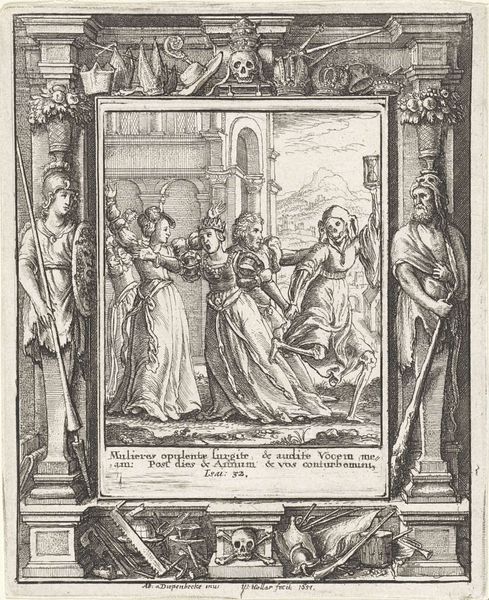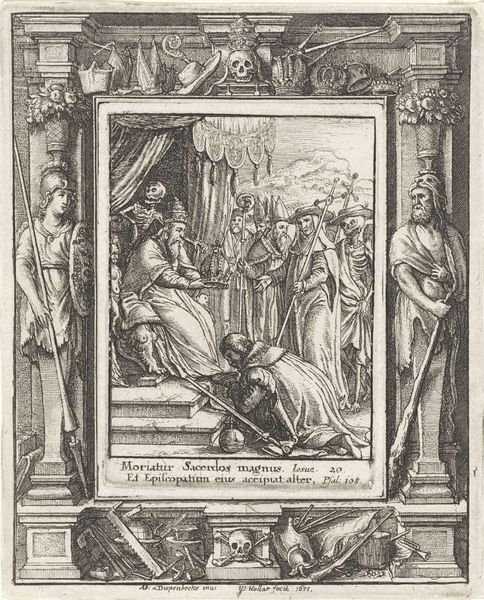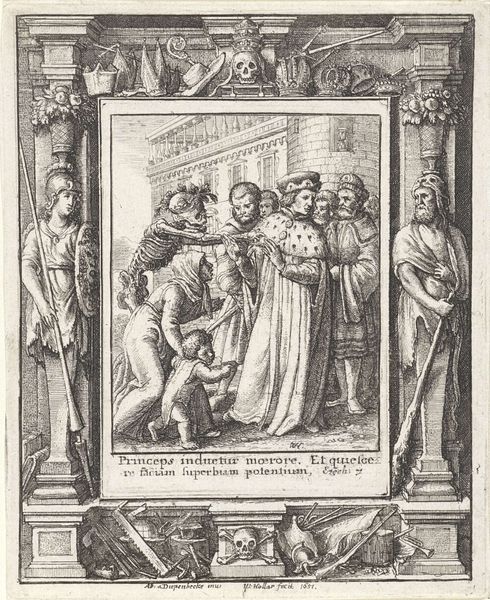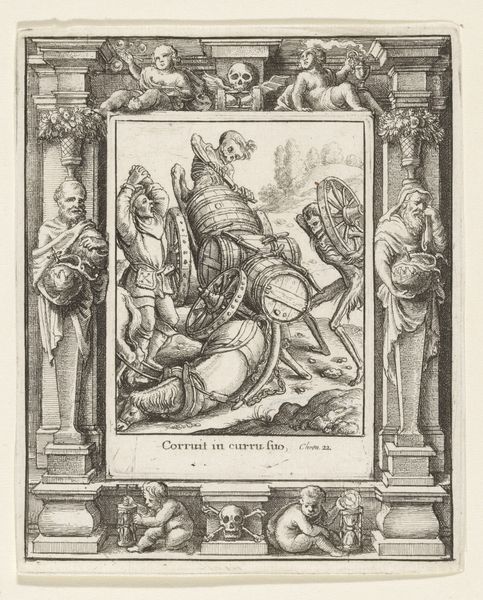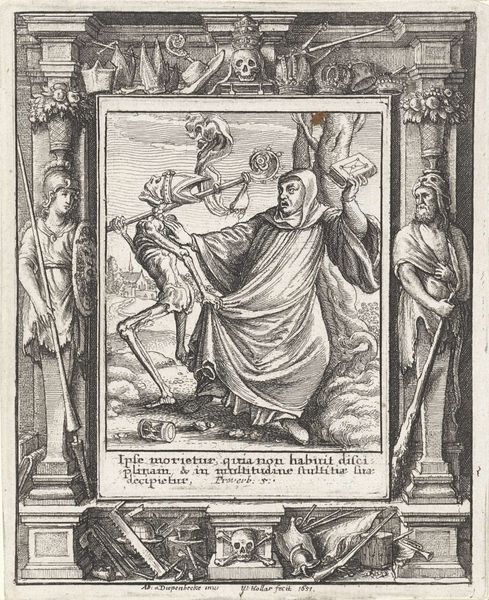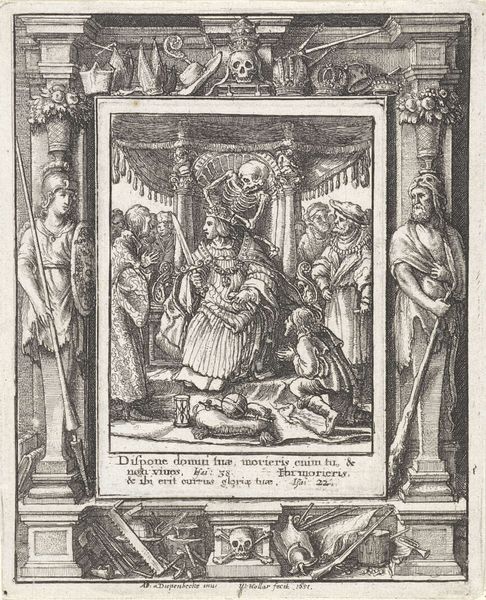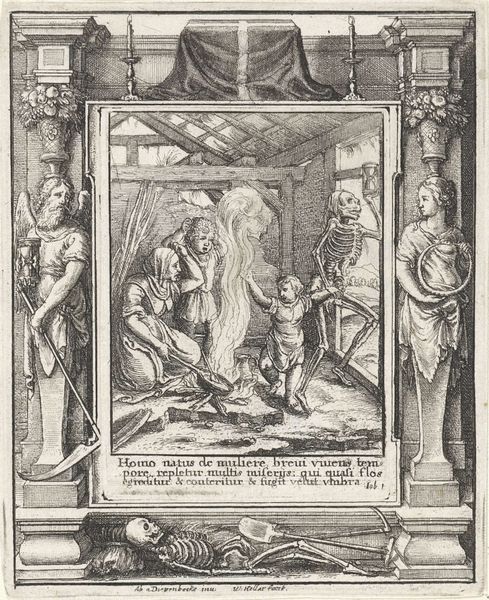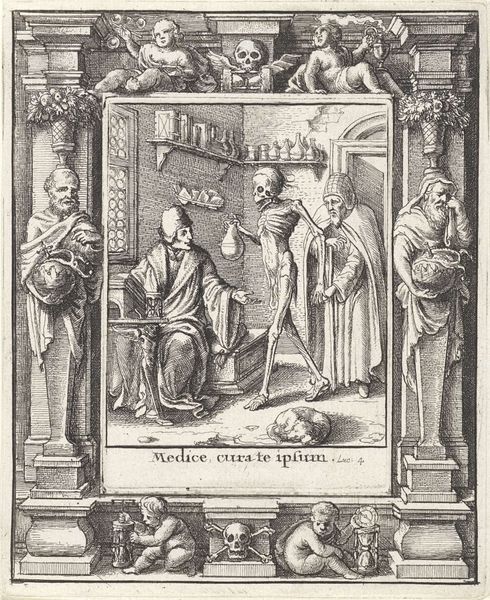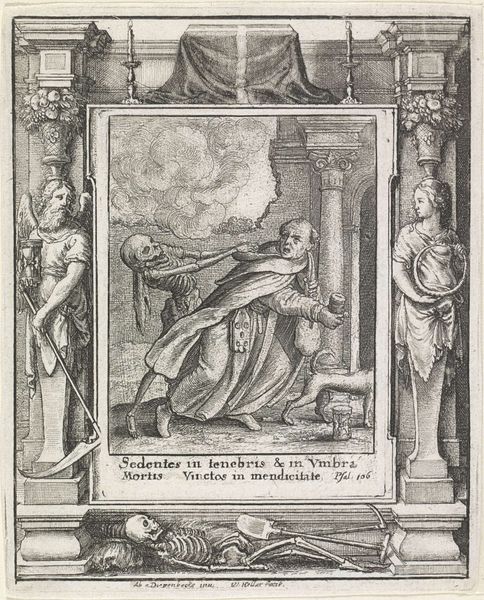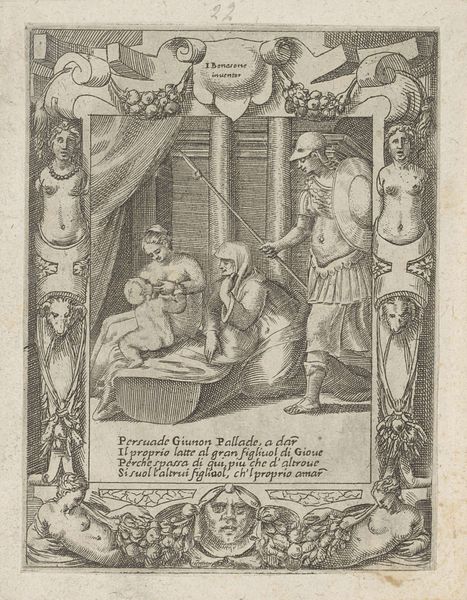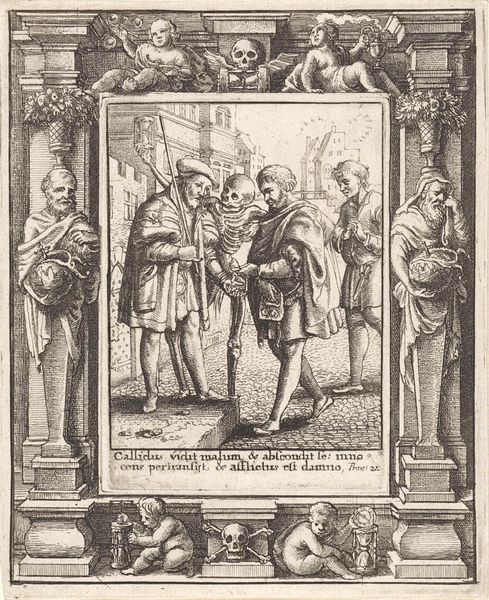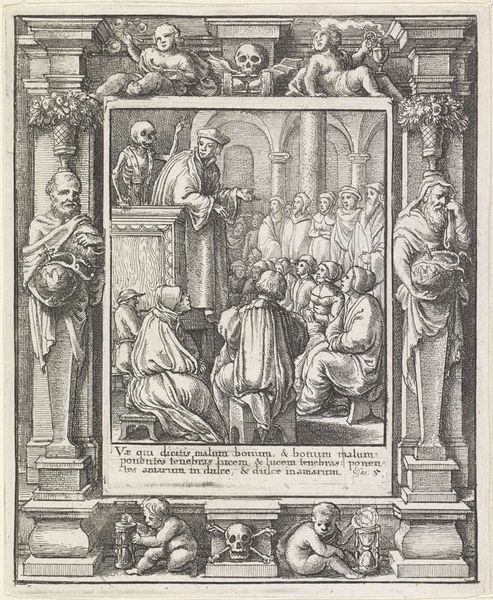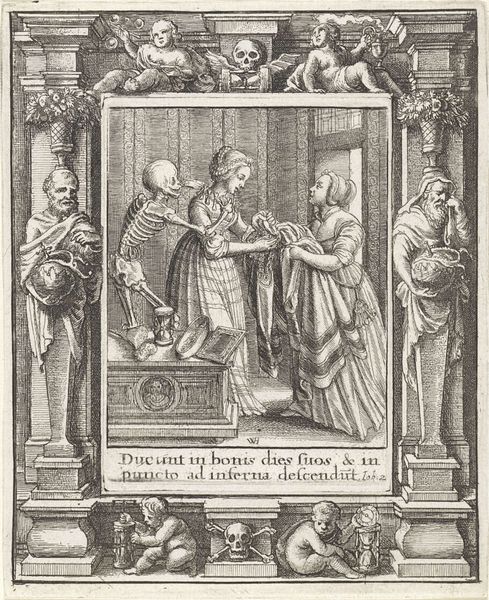
print, engraving
#
allegory
#
baroque
#
pen drawing
# print
#
pen illustration
#
pen sketch
#
genre-painting
#
engraving
Dimensions: height 115 mm, width 95 mm, height 77 mm, width 55 mm
Copyright: Rijks Museum: Open Domain
Wenceslaus Hollar made this etching, ‘The Cardinal and Death,’ using metal and acid. These are not traditional ‘art’ materials. Instead, Hollar was part of a printmaking boom in the 17th century, meeting a huge demand for reproducible images. The etching process itself involves coating a metal plate with wax, scratching an image into the wax, and then dunking the plate in acid. The exposed metal is eaten away, leaving an impression that can be inked and printed. Hollar was a master of this method, using thin lines to create an image of surprisingly rich texture. The choice of etching is significant here. It allowed Hollar to efficiently produce images for a growing market. The scene, a Cardinal being reminded of his mortality, speaks to a society grappling with wealth and power. Ultimately, Hollar’s choice of materials and process –etching in metal– speaks volumes about his time. It underscores the links between art, labor, and social critique.
Comments
No comments
Be the first to comment and join the conversation on the ultimate creative platform.
